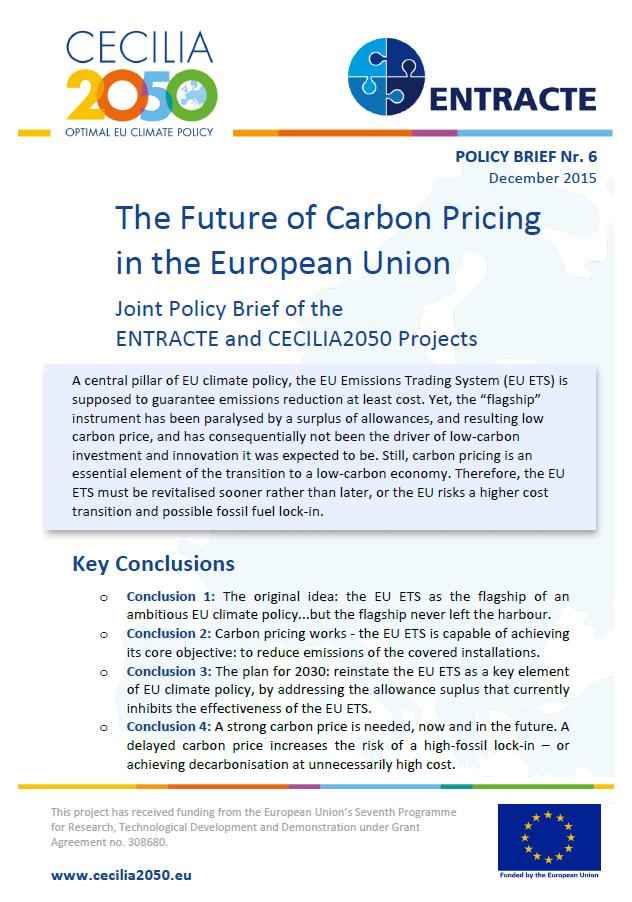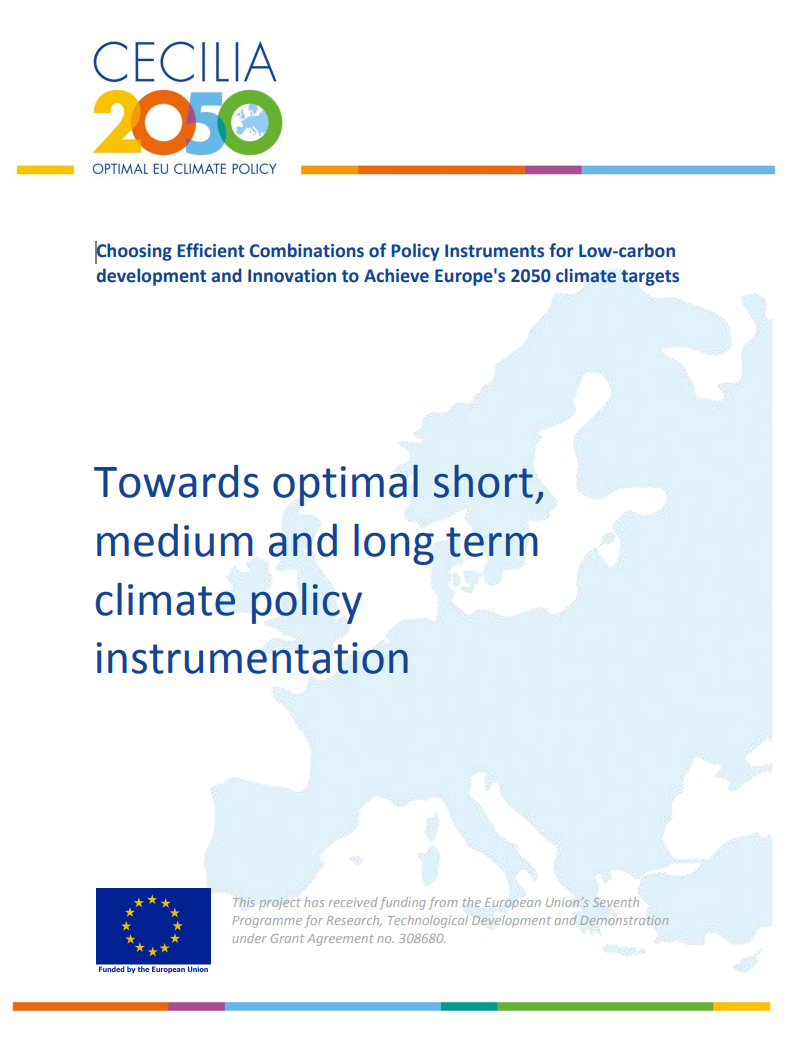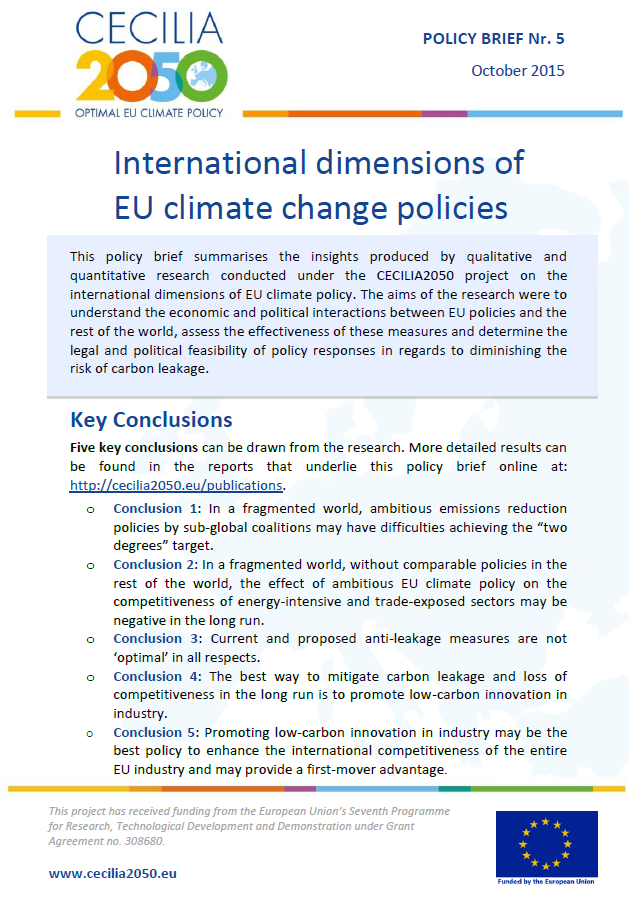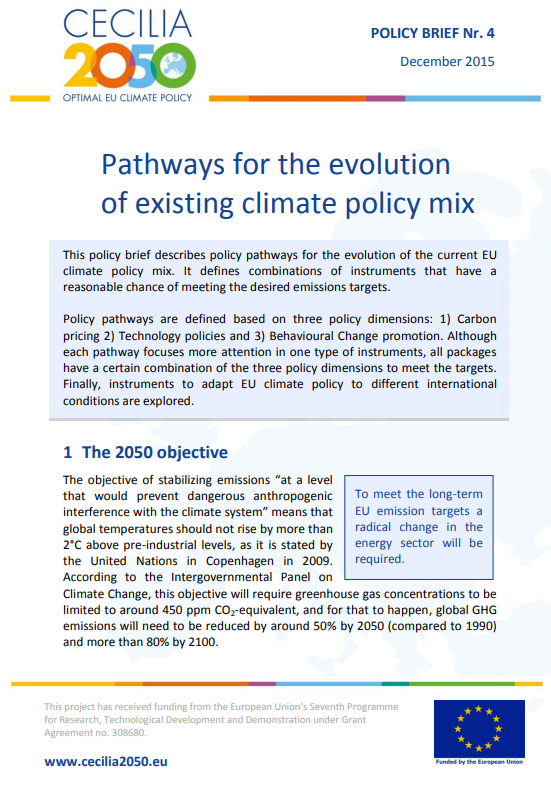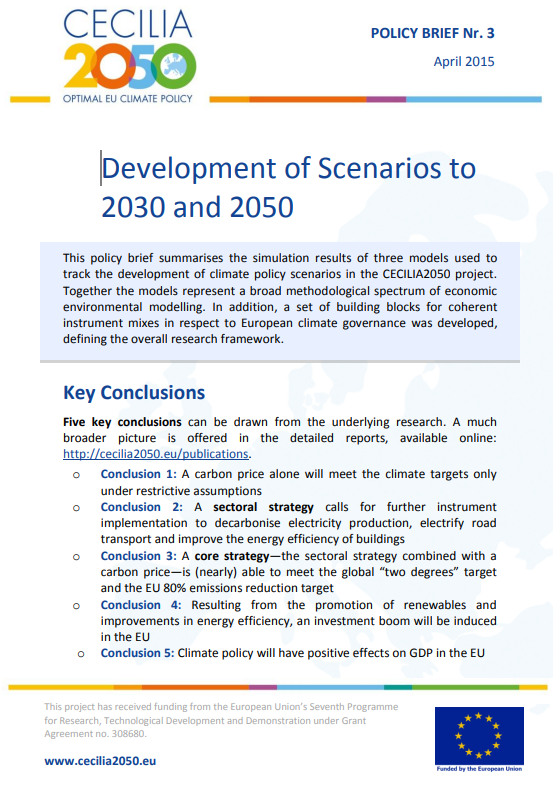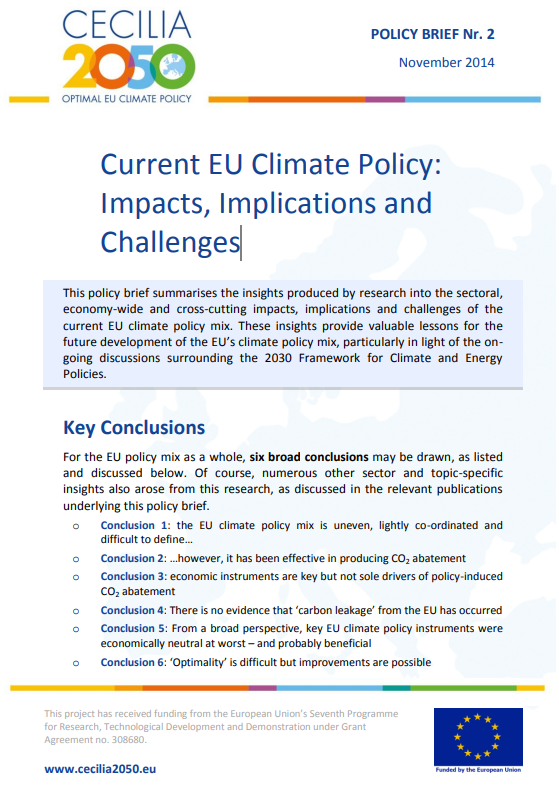The Role of Law and Institutions in Shaping European Climate Policy
Institutional and Legal Implications of the Current Climate Policy Instrument Mix
- Publication
- Citation
Mehling, Michael; Dr. Camilla Bausch; Lena Donat and Elizabeth Zelljadt 2013: The Role of Law and Institutions in Shaping European Climate Policy, Berlin.
This report, created as part of the CECILIA2050 project, gives an overview of climate policy approaches in Germany, Poland, the United Kingdom, as well as the European Union as a whole. After highlighting the different legal and institutional structures, it provides conclusions and recommendations regarding the regulatory approach.
The report is available for download [pdf, 1.4 MB, English].
- Language
-
English
- Authorship
- Funding
-
European Commission, Directorate-General Research & Innovation (DG Research & Innovation), International - Year
- Dimension
- 93 pp.
- Project
- Project ID
- Table of contents
-
Click to show full table of contents
Executive Summary
1. Introduction
1.1 Background
1.2 Objectives
1.3 Method and Selection of Member States
1.4 Focus and Limits of the Study2. Parameters of Instrument Choice: Conceptual Approaches and the Role of Law and Institutions
2.1 Conceptual Criteria of Instrument Choice
2.2 Instrument Choice and the Role of Law and Institutions3. European Union
3.1 General Structure of the European Union
3.2 Climate Policy in the European Union (the past and present)
3.3 Prominent Policy Choices
3.3.1 Carbon Pricing
3.3.2 Promotion of Renewable Energy Sources4. Germany
4.1 Climate policy in Germany (past and present)
4.2 Legal and institutional structure of Germany
4.2.1 Overview
4.2.2 Executive branch
4.2.3 Legislative branch
4.2.4 Judicial branch
4.3 Regulatory tradition
4.4 Conflicts and challenges
4.4.1 Different regulatory approaches
4.4.2 Different regulatory planes
4.4.3 Conflict of policy instruments and basic rights
4.4.4 Conflict of policy instruments with EU law
4.4.5 Conflicting objectives5. Poland
5.1 Climate policy in Poland (past and present)
5.1.1 Mitigation record and future plans
5.1.2 Climate of conflict: social, economic, and political context
5.2 Institutions and political structure
5.2.1 Executive branch
5.2.2 Legislative branch
5.2.3 Judicial branch
5.3 Regulatory tradition
5.4 Conflicts and challenges
5.4.1 Constitutional conflict
5.4.2 Conflicting regulatory planes
5.4.3 Regulatory approach, "soft" conflicts6. United Kingdom
6.1 Climate policy in the UK (past and present)
6.2 Legal and institutional structure of the United Kingdom
6.2.1 Overview
6.2.2 Executive branch
6.2.3 Legislative branch
6.2.4 Judicial branch
6.3 Regulatory tradition
6.4 Conflicts and challenges
6.4.1 Different regulatory approaches
6.4.2 Different regulatory planes7. Overview
8. Conclusions
8.1 Regulatory approaches change
8.1.1 New approaches can trigger legal conflicts
8.1.2 Innovative conflict resolution mechanism emerged
8.1.3 Path dependencies can be a risk and an opportunity
8.1.4 The freedom to test various approaches can be fruitful
8.2 The real regulations tends not to be the perfect one
8.2.1 Scope of regulation can lead to conflicts among institutions
8.2.2 Conflicting goals limit options for regulation
8.2.3 (New) Member States need incentives for implementation
8.2.4 The sub-national level should be taken into account9. References
Literature
Personal correspondence / expert interviews
- Keywords
Combining Policy Instruments to Achieve Europe's 2050 Climate Targets (CECILIA2050)
- Duration
-
-
- Funding
-
European Commission, Directorate-General Research & Innovation (DG Research & Innovation), International
